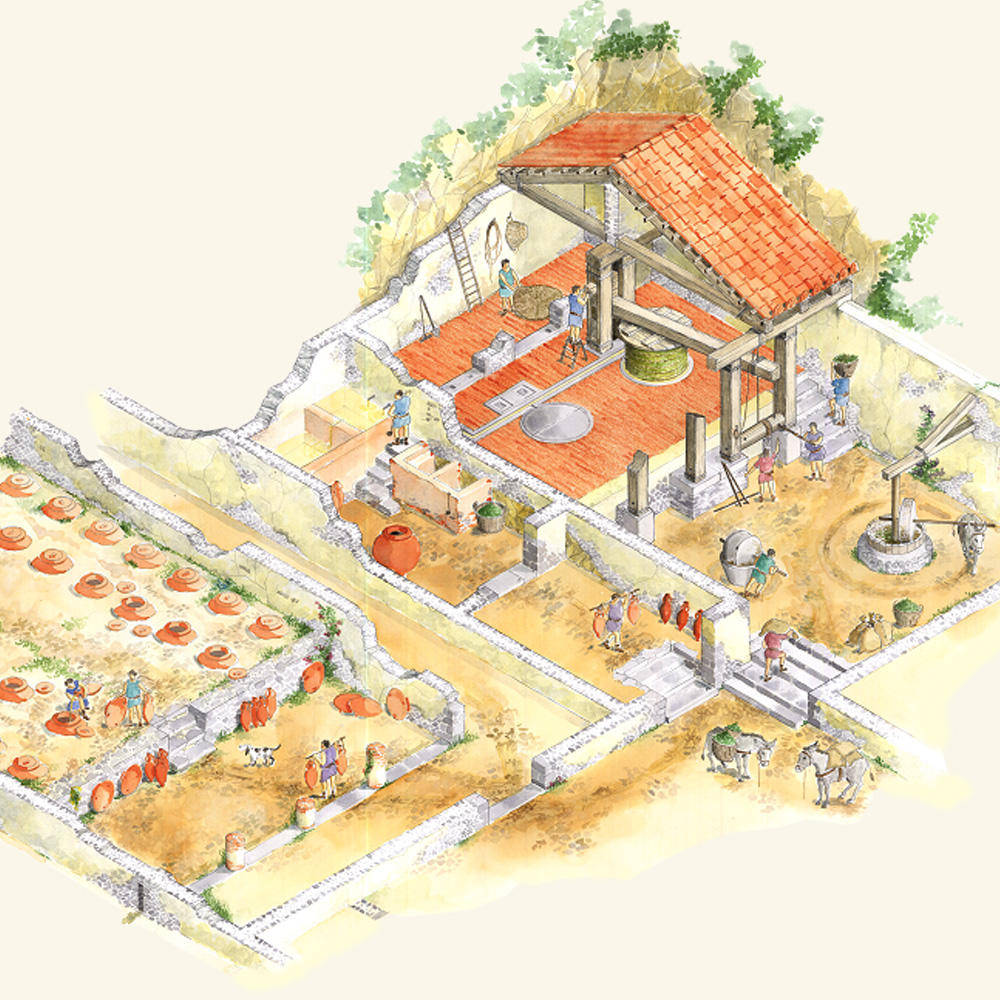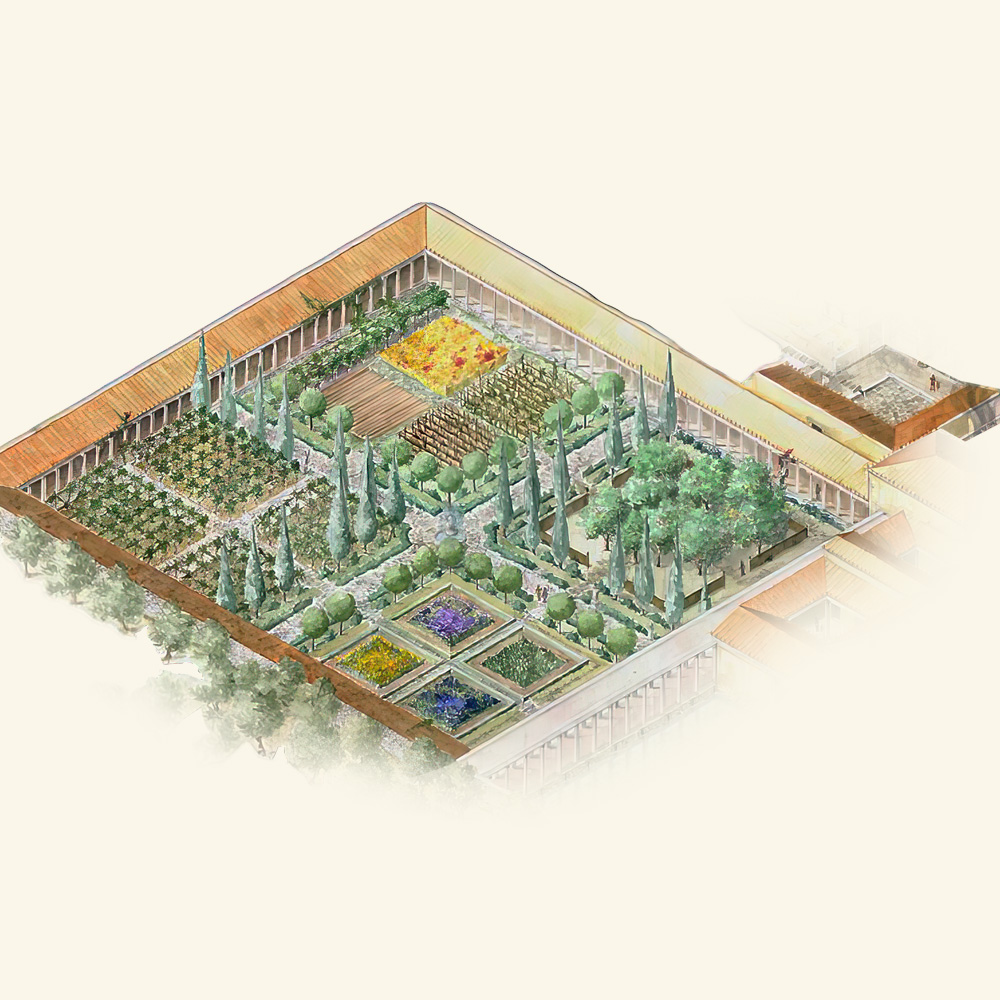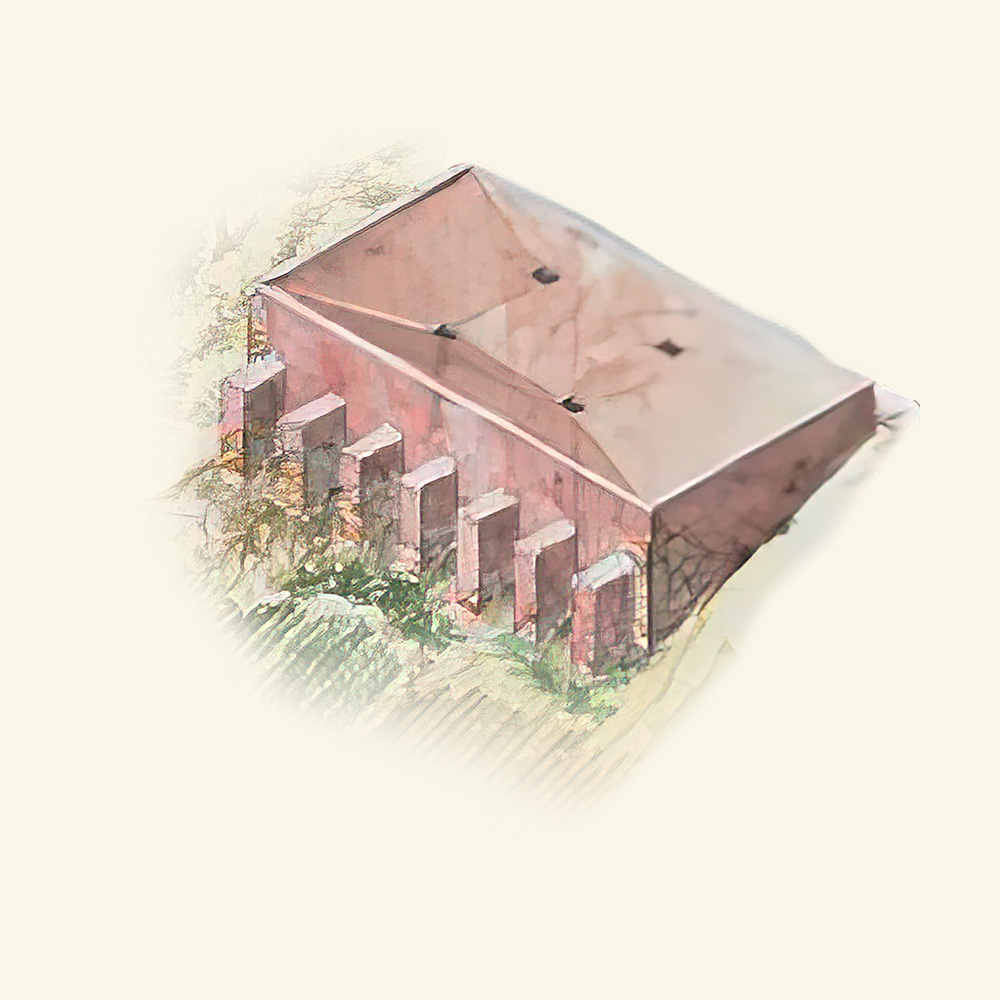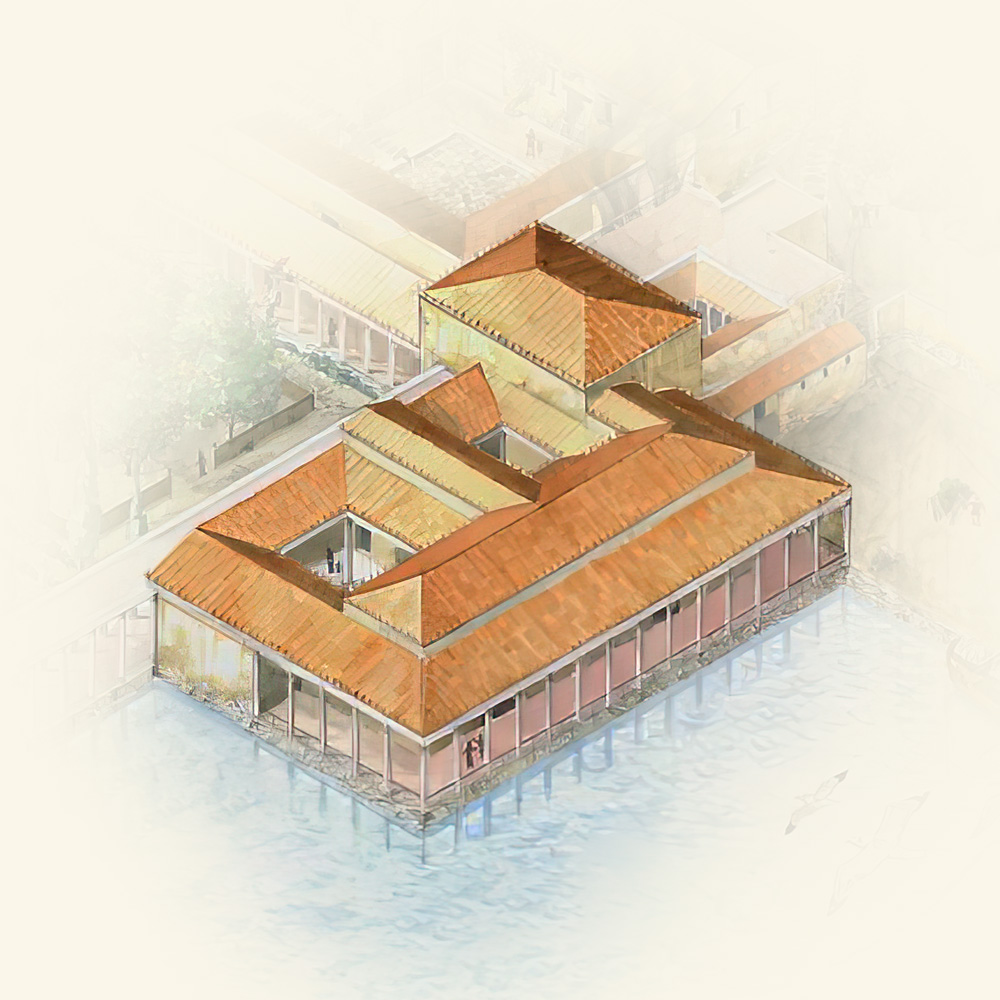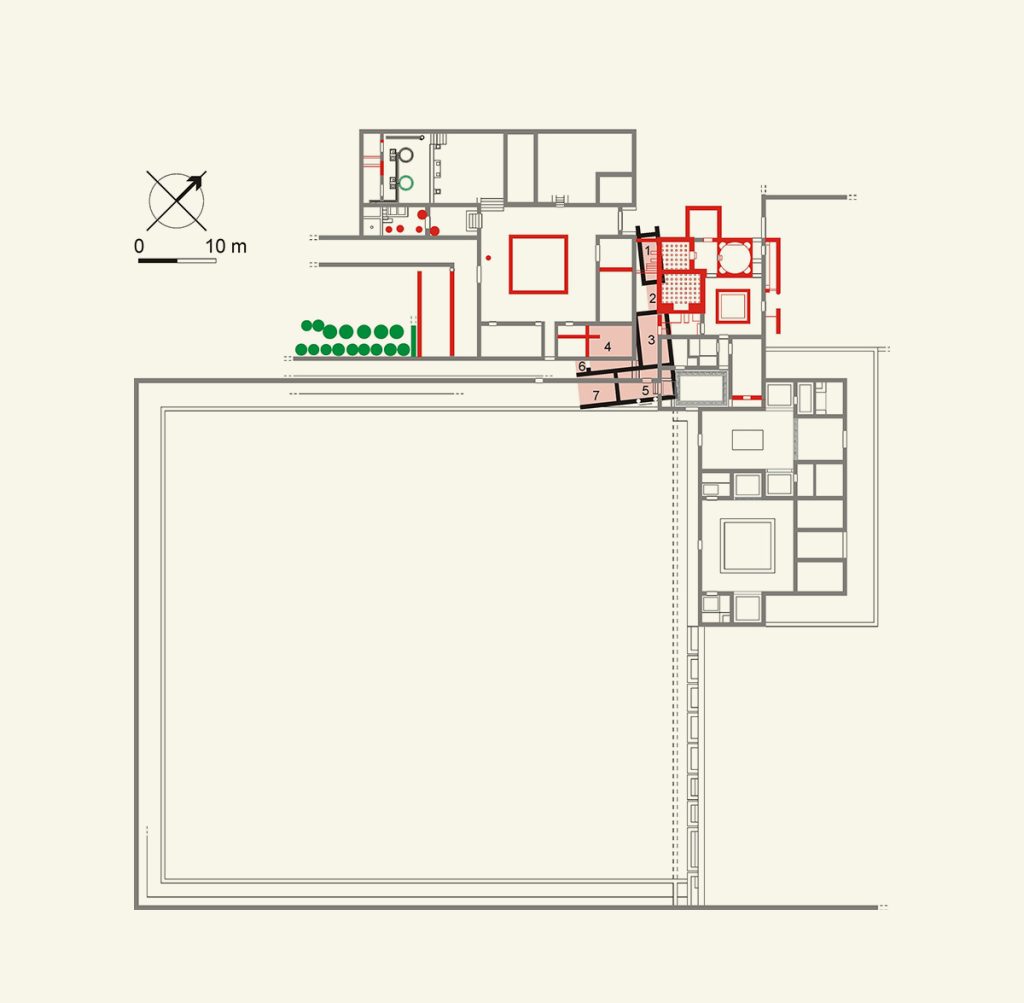The villa
In Roman times the Villa directly overlooked the sea and enjoyed a view of the Gulf of La Spezia. It therefore fell within the type of construction that the ancient Romans called villa maritima.
Although the excavation of the portico that faced the coast and of some rooms located on the short sides still needs to be completed, the plan can be entirely reconstructed.
The complex is developed around two atriums with a compluviated roof, in which a refined taste can be recognized, demonstrated by the Lunense marble coverings but above all by the variety of choices of flooring. Different types can be found: in variously decorated cocciopesto or mosaics with tesserae of sizes ranging from the millimetric ones of the opus vermiculatum to the large ones of the basket mosaic.
The whole was then embellished with painted plaster and refined furnishings that made the Villa a place of otium, which in the Roman conception is not doing nothing but dedicating oneself to activities such as study, other than political life and the care of public affairs (negotium).
The Villa was built in the 1st century BC, and was annexed to the house of the farmer (vilicus) and his family, which, in the 1st century AD, was replaced by a balneum, a thermal facility serving the residential area.
In the 4th century AD a series of walls of uncertain function were superimposed on those of the Villa, making it difficult to read today.



The baths
In the 1st century AD, in correspondence with what had previously been the farmer’s house, the owner of the Villa had a thermal system built to serve his residence. Evidence of the transformation of this sector can be seen in the remains of the columns that delimited the peristyle of the house, which were then walled up to obtain a fountain.
The purpose of the thermal rooms is certain due to the presence of pilae, that is, the brick columns that were not visible in Roman times because they were positioned under the floors; they allowed the uniform circulation of the heat produced by the combustion of wood in the nearby service room.
The thermal baths included a path through rooms with different temperatures: starting from the hottest ones and ending with a bath in the cold water tub. The one in Varignano is embellished with niches in which the female statue in Lunense marble (today’s Carrara marble) was probably placed, identified with Hygieia, a deity protecting health.

